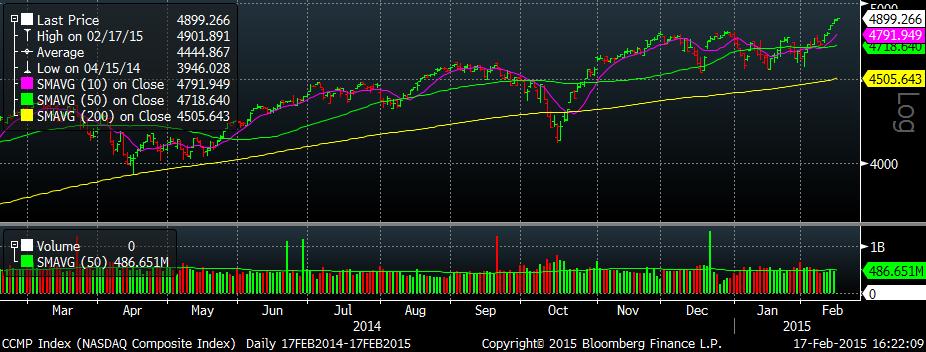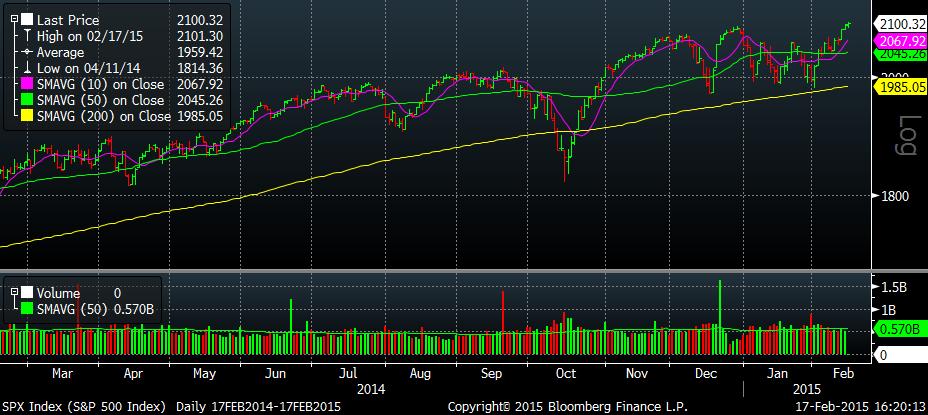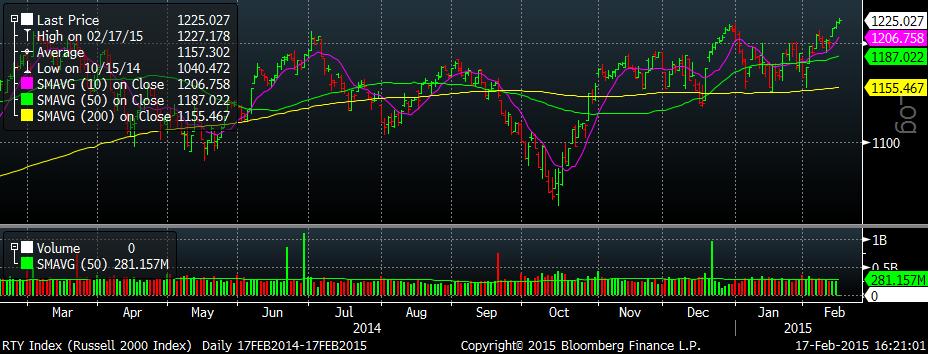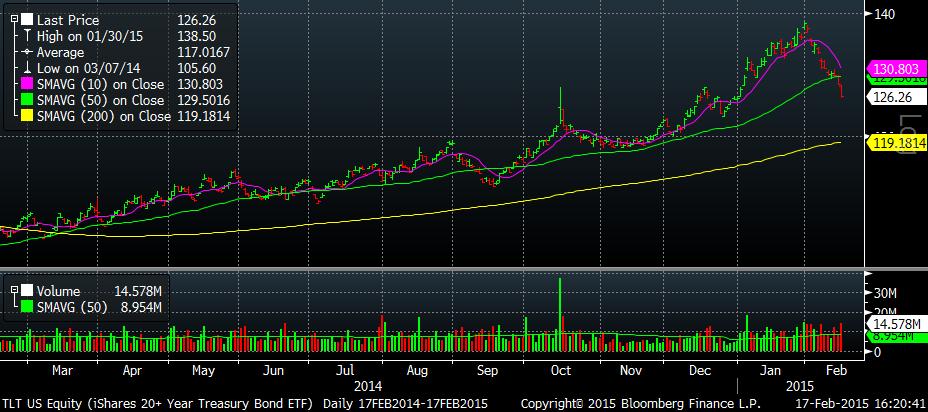A light day in economic data, but most eyes were on the bailout talks between the EU and Greece. US Equity futures initially indicated a much larger move to the downside. However, by the open these losses were minimalized. Much of the session stocks traded in a relatively tight trading range. This is not something we have seen for quite some time. Volume on the NASDAQ dropped from Friday’s level, but we saw NYSE volume inch higher. All-in-all not a bad session, but it is clear the NASDAQ remains the leading index in the market at the moment.
At the moment, the NASDAQ composite index is the only index showing escape velocity from the recent consolidation. While the S&P 500 and Russell 2000 have hit new highs they simply have been unable to jump with authority. This is simply a warning and not something to be overly concerned about just yet. We need to see some push from these indexes to confirm the escape velocity we see with the NASDAQ. It is nice to be at all-time highs on the S&P 500, but when the index appears to do it in a sluggish fashion it does not help with our conviction. The trend is still up, but we will keep an eye on reversals as it pertains to our stops.
Treasury yields rallied hard today. TLT continued its march towards its 200 day moving average after slicing through its 50 day on Friday. Volume was quite large as well. It was more than 50% of its 50 day average volume. Is this a signal rates will be pushing higher? Given the fall in crude prices it is hard to fathom inflation will nudge the Fed towards higher rates any times soon. Anything is possible and with the Northeast under such terrible weather conditions it may even put pressure on 1st quarter GDP. Last year the polar vortex did a number on GDP. Will this year’s weather give the Federal Reserve an excuse not to raise rates? Will bad news once again be good news for stocks? The current trend in the market certainly indicates we are going to continue to push higher despite the risk climate. Follow the trend.
Sentiment continues to favor the bull camp, but once again we do not see an extreme view. AAII bulls jumped to 40% while bears fell to 20%. The 40% reading is well below 60% we have seen in some extreme cases. NAAIM exposure index is at 84 and below the 100+ readings we have seen in the past. At this point, until we see some extremes these readings are simply not useful.
A few short-term indicators are pushing into over-bought territory. Nothing is screaming we have a top in place. Often times we’ll see these types of readings last much longer than many cannot anticipate. Rather than focusing on these types of reading simply managing risk levels and adhering to price signals is the best recipe for success.






